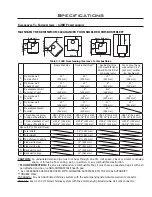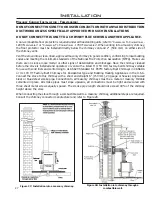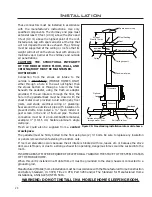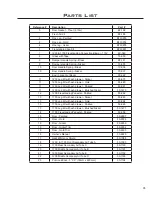
Installation
M
ASONRY
C
HIMNEY
I
NSTALLATION
- F
REESTANDING
:
DO NOT CONNECT THIS UNIT TO OR USE IN CONJUCTION WITH ANY AIR DISTRIBUTION
DUCTWORK UNLESS SPECIFICALLY APPROVED FOR SUCH INSTALLATIONS
DO NOT CONNECT THIS UNIT TO A CHIMNEY FLUE SERVING ANOTHER APPLIANCE.
A non-combustible fl oor protector is required under all freestanding units; refer to “C
LEARANCES
T
O
C
OMBUSTIBLES
-
1200 F
REESTANDING
” or “C
LEARANCES
T
O
C
OMBUSTIBLES
- 1700 F
REESTANDING
”. When venting into a masonry chimney,
the fl oor protector must be installed directly below the chimney vent and 2” (50.8 mm) on either side of
the chimney vent.
Vent the stove into a clean, lined, approved masonry chimney in good condition, conforming to local building
codes and meeting the minimum standards of the National Fire Protection Association (NFPA). Make sure
there are no cracks, loose mortar or other signs of deterioration and blockage. Have the chimney cleaned
before the stove is installed and operated, or vent with a listed 6” (150 mm) factory-built chimney suitable
for use with solid fuels and conforming to ULC-S629 Standard for 650°C factory-Built Chimneys in CANADA
or UL 103 HT Factory-Built Chimneys for Residential Type and Building Heating Appliances in the U.S.A.
Connect the stove to this chimney with a short and straight 6” (150 mm), 24 gauge or heavier, single-wall
black or blued steel smoke pipe. Connection to all masonry chimneys must be a metal or masonry thimble
cemented in place. All smoke pipes must slope upwards, all connections must be tight and secured with
three sheet metal screws equally spaced. The smoke pipe length should not exceed 40% of the chimney
height above the stove.
When connecting the stove through a combustible wall to a masonry chimney, additional steps are required.
Consult the chimney connector manufacturer and refer to Figure 28.
Figure 27: Installation into a masonry chimney.
Figure 28: Installation into chimney through a
combustible wall.
27














































